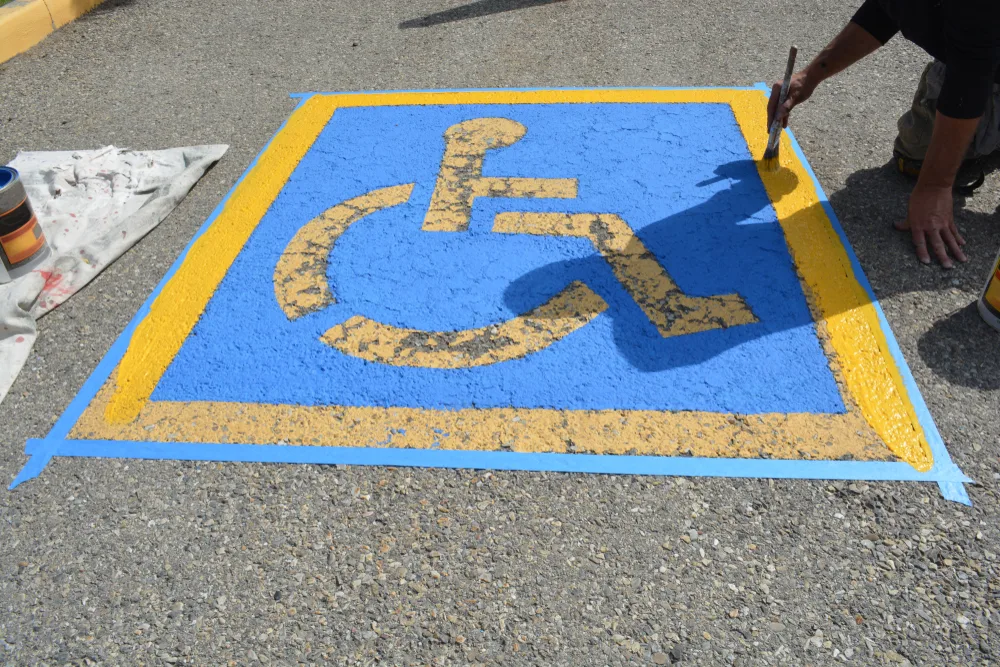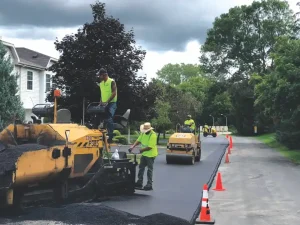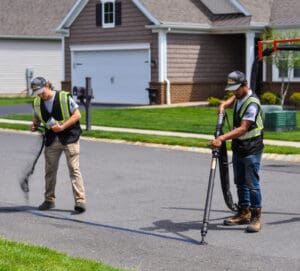A well-designed parking lot is often an overlooked aspect of a business or property. A poorly planned layout can lead to frustration for drivers, congestion, and even safety hazards. On the other hand, an optimal use of striping and signage can significantly enhance the user experience within a parking lot. Let’s take a closer look at some key best practices for striping and signage to optimize traffic flow, ensure driver clarity, and promote a safe parking environment.
Table of Contents
Strategic Striping for Smooth Traffic Flow

The configuration of parking spaces and traffic lanes plays a crucial role in directing vehicles and minimizing congestion. There are two critical aspects of striping for a smooth traffic flow:
1. Choosing the Optimal Parking Stall Angle
There are two primary parking stall configurations: perpendicular and angled. Perpendicular stalls, where cars park directly alongside the traffic lane, offer the benefit of maximizing the number of parking spaces within a given area. However, angled parking stalls, typically at 45 or 60 degrees, provide an easier entry and exit for drivers, especially in larger vehicles. This can significantly improve traffic flow, particularly in busy parking lots.
2. Designing Efficient Traffic Lanes
The design of traffic lanes within a parking lot significantly impacts driver behavior and overall efficiency. One-way lanes promote a predictable flow of traffic and minimize the risk of head-on collisions. However, two-way lanes can be suitable for wider parking lots, provided there is ample space for vehicles to pass each other comfortably. Regardless of the chosen configuration, maintaining consistent lane widths throughout the parking lot is essential. This prevents confusion and ensures a smooth flow of traffic.
Clear and Concise Signage for Driver Guidance
Effective signage is an integral part of a well-designed parking lot. It provides drivers with clear instructions, promotes safety, and ensures compliance with regulations.
Regulatory signage plays a vital role in ensuring adherence to parking regulations and maintaining safety within the parking lot. Some key regulatory signs include:
- Handicap Parking Designation: These signs, accompanied by the International Symbol of Access, clearly identify designated parking spaces for vehicles with disability permits.
- Fire Lane Markings: Clear signage and red paint markings are crucial for designating fire lanes. These areas must be kept free from obstruction to allow for emergency vehicle access.
- No Parking Zones: Signs with clear verbiage are essential for indicating areas where parking is prohibited. This can include zones for pedestrian walkways, loading areas, or fire hydrant access.

Informational signage enhances the user experience by providing clear guidance to drivers. This can include:
- Entrance and Exit Designation: Prominent signage at the entry and exit points of the parking lot helps drivers navigate efficiently.
- Direction of Travel Indicators: Arrows painted on the pavement, coupled with signage, can effectively indicate the designated direction of traffic flow within the parking lot. This minimizes confusion and prevents collisions.
Maintaining Visibility and Safety
Even the most strategically designed parking lot layout can be compromised by poor visibility.
The clarity and longevity of striping and signage are essential for maintaining a safe and functional parking lot. Using high-quality, reflective paint for both striping and markings guarantees their visibility during the day and under low-light conditions.
In addition, adequate lighting throughout the parking lot is crucial for nighttime navigation. Well-maintained light fixtures ensure good visibility of striping, signage, and pedestrians, promoting safety for drivers and pedestrians alike.
Get the Best in Parking Lot Layout Services from Pro-Pave!
At Pro-Pave Incorporated, we have a team of experts adequately equipped to handle your parking lot project. No matter what your vision may be, or what kind of materials you want to use, we have the skills and expertise needed to do the job right.
For more information about our approach to treating and preventing alligator cracks, call us directly at 571-593-5563 or fill out our contact form today!



